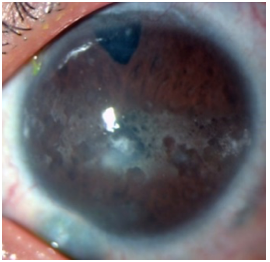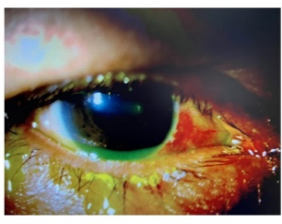A Case of Malignant Glaucoma Following a Trabekulectomy Poster Presentation - Case Report - Resident
Abstract
Introduction : Malignant Glaucoma (MG) is characterized by a shallow anterior chamber (AC) associated with a raised intraocular pressure (IOP) usually following a filtration surgery in eyes with angle closure.
Case Illustration : A 56-year-old female patient presented on the second day post trabeculectomy with a shallow AC. The patient experienced ocular pain on the 2nd day post-op. Visual acuity was 6/40 and NCT was 57 mmHg in her LE. Slit lamp examination showed an absent peripheral AC the patient was treated with oral acetazolamide, topical timolol, topical brimonidine, and topical cycloplegics. 24 hours later, the IOP was 34 mmHg, absent AC with mild corneal edema. The diagnosis was Glaucoma Maligna post Trabeculectomy ec Acute attack PACG. After a month, corneal edema has resolved, visual acuity was 6/12, IOP was 27.6mmHg.
Discussion : The exact mechanism of MG remains unclear. There is likely to be an anatomical interaction between the ciliary processes, lens, and anterior vitreous face which causes the diversion of aqueous backwards into the vitreous cavity and causing the anterior rotation of the cilliary processes therefore blocking the aqueous outflow. Although, in our case this problem was moderated by cycloplegics and glaucoma medications, literature describes interventions such as lens extraction, posterior capsulotomy, anterior vitrectomy and pars plana vitrectomy was necessitated in some cases to decrease IOP.
Conclusion : MG is a sight threatening condition caused by a raised IOP in the presence of a patent iridectomy usually occurring after an intraocular surgery. The management of this condition could vary from medications to surgical interventions.
Full text article
References
(-)
Authors

This work is licensed under a Creative Commons Attribution-NonCommercial-ShareAlike 4.0 International License.



